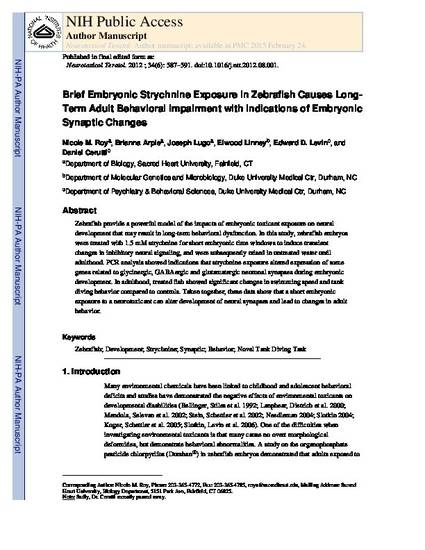
Zebrafish provide a powerful model of the impacts of embryonic toxicant exposure on neural development that may result in long-term behavioral dysfunction. In this study, zebrafish embryos were treated with 1.5mM strychnine for short embryonic time windows to induce transient changes in inhibitory neural signaling, and were subsequently raised in untreated water until adulthood. PCR analysis showed indications that strychnine exposure altered expression of some genes related to glycinergic, GABAergic and glutamatergic neuronal synapses during embryonic development. In adulthood, treated fish showed significant changes in swimming speed and tank diving behavior compared to controls. Taken together, these data show that a short embryonic exposure to a neurotoxicant can alter development of neural synapses and lead to changes in adult behavior.
Available at: http://works.bepress.com/nicole_roy/1/

Version posted its the NIH Public Access Author Manuscript. PMCID: PMC4338986
Publisher's final edited version is available at:
Roy, N. M., Arpie, B., Lugo, J., Linney, E., Levin, E. D., & Cerutti, D. (2012). Brief embryonic strychnine exposure in zebrafish causes long-term adult behavioral impairment with indications of embryonic synaptic changes. Neurotoxicology and Teratology, 34(6), 587–591. Doi:10.1016/j.ntt.2012.08.001